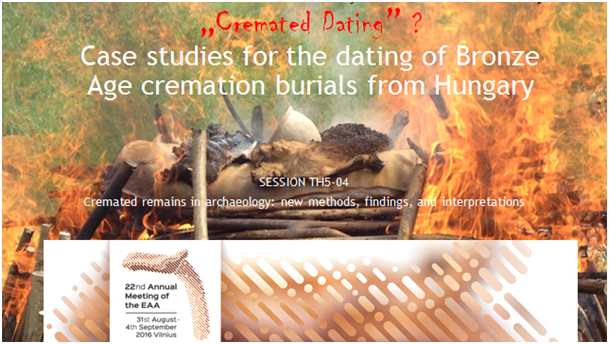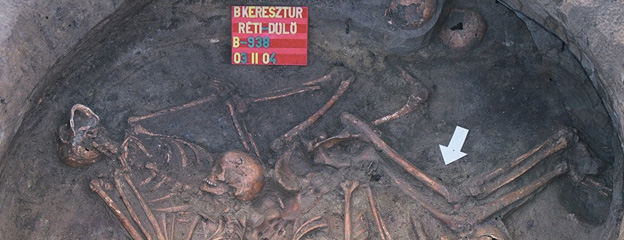Dating of cremated bones – Discussion in Debrecen
An important pillar of our project is the more accurate AMS radiocarbon dating of samples (human bones) from burials in order to clarify the absolute chronology of Early and Middle Bronze Ages of Hungary. Since during the period under review (2500-1500 BC) cremation ritual was general in most regions of the Carpathian Basin, the possibility of radiocarbon dating of cremated/burnt bones is a very important methodological question. In the case of unburnt bones, the extraction and determination of the organic component (collagen) is the manner. In case of cremated bones, measuring the absolute age of inorganic parts of the bone (strictly speaking the carbon in bioapatite) is possible. The evaluation of this latter sample is much more challenging. Basic research consists of adapting new methods used only by few laboratories and the development of professional protocols, which is carried out by Mihály Molnár and István Major performed in Hertelendi Laboratory of Environmental Studies of HAS ATOMKI (Debrecen), in collaboration with our research group.
We presented the first case studies of the Early Bronze Age at the 22nd Annual Meetingof the European Association of Archaeologists held in Vilnius, 31st August – 4th September 2016 in a lecture (I. Major, V. Kiss, E. Melis, G. Kulcsár, R. Patay, G. Szabó, G. Váczi, J. Dani: “Cremated Dating”? Case studies for the dating of Bronze Age cremation burials from Hungary), and outlined the methodological experiences on a poster (I. Major, J. Dani, V. Kiss, G. Kulcsár, R. Patay, G. Szabó, G. Váczi, K. Hubay, M. Molnár: Advances in 14C dating of cremated bones at HEKAL Laboratory, Debrecen, Hungary).

Reconciliation of proposed articles served as a pretext for the meeting held on 9th February in Debrecen. Furthermore, together with archaeologists and physicists we attempted to interpret the results of the samples from Szigetszentmiklós, Baracs, Bonyhád, Debrecen and Ménfőcsanak. Answering fundamental questions such as ‘Are cremated bones suitable for radiocarbon dating (i. e. s it sufficiently calcined)?’, may be facilitated by performing additional physical tests available in the HAS ATOMKI (Fourier-transformation Infrared Spectroscopy δ13C content measurement). During the meeting, we could get some insight into the multi-stage process of radiocarbon sample preparation and measurement as well.
Participants of the meeting: János Dani (Déri Museum), Géza Szabó (Wosinszky Mór Museum), Róbert Patay (Ferenczy Museum), Gábor Váczi and Kristóf Fülöp (ELTE Institute of Archaeological Sciences), members of our research group: Viktória Kiss, Gabriella Kulcsár, Eszter Melis, Vajk Szeverényi and researchers of the HAS ATOMKI: István Futó, Katalin Hubay, István Major, Mihály Molnár, Zita Szikszai.








